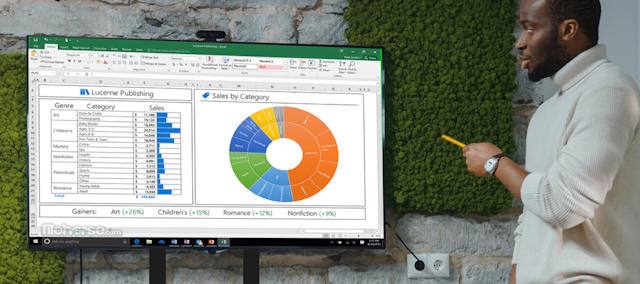Product insights • October 24, 2022
Driving new learning: Dear Teachers, Technology is your tool

Most people dislike disruption. Given a choice, the inconvenience of suddenly changing the age-long way of doing things, whether it is in teaching, learning, using new technology or any other human endeavor is readily avoided. This is particularly true for teachers in the African continent.
Before the recent proliferation of education technology in Africa, the use of classroom technology had been sparing. In Nigeria for instance, the most technology you could find in classrooms 10 or 15 years ago were occasional Game-boy consoles sneaked in by the most daring students; to which the rest of the class whispered, huddled together and took turns to play at the slightest opportunity. Occasional desktop computers were objects kept in computer labs to be revered and touched strictly under supervision once a week.
The last three or four years have seen an upsurge in the amount of technology flooding classrooms in Africa. From laptops and tablets to Interactive whiteboards and Interactive touchscreens, teachers have increasingly been required to use technology to enhance learning. The present challenge for these teachers, however, lay in adopting these technologies as tools important for 21st-century learning.
A chat with most teachers required to use interactive technology reveals an apprehension, maybe even a lackluster attitude towards tech use. Issues of class management and control, ease of use and seamless integration with lesson plans are recurrent. For these teachers, -most of them veterans in the field of learning- technology has come to disrupt. To them technology will disrupt lesson flow, much like a sudden power outage will interrupt your favourite show, pulling an “oh NEPA!”(a common exclamation in response to a power outage in Nigerian parlance), suddenly bringing darkness and confusion to an otherwise preplanned, anticipated, easy and relaxed learning environment.
Interactive classroom technology comes with the promise of facilitating the development of 21st-century skills of communication, collaboration, critical analysis, and creativity, bringing together an array of software and online learning tools to enhance learning from anywhere.
On the one hand, Interactive touchscreen technology is state-of-the-art classroom technology, reaching beyond the hype to gradually fulfill the promise of transforming learning in Africa. On the other hand are teachers -veterans in their field, skilled and successful in teaching African students with the age-long curricular; having an apprehension and expressing uncertainty toward the outcome of wholly adopting technology in African classrooms.
For classroom technology to reach their potential of transforming learning and for teachers to actively direct the course of said transformation, there should be seamless integration between classroom technology and the teaching process in Africa, bringing together the best of both worlds.
Below are a few tips to encourage seamless integration.
Understand that technology is a tool. ¶
Teachers should view classroom technology primarily as tools, with the accompanying entertainment modules extra advantage. Viewed as tools, teachers will approach classroom technology with the open mind a farmer who has used any farming tool will give innovation in farming (learning to use such tools without bias or fear of losing respect or relevance). Familiarity with such tools will help teachers control tech use in classrooms, thereby eliminating the issue of classroom management.
Much like tractors, harvesters, sprayers, and diggers are tools and equipment that enhance farming, classroom technology is here to make teaching easier; helping teachers cover areas and aspects of teaching not exactly possible within the usually allocated lesson time without breaking a sweat.
Take ownership of determining the type of technology suited to your classrooms ¶
With various types of classroom technology available for use, teachers should own the process of determining and recommending technology suited to their style of teaching. This implies that teachers should be actively involved in technology research, looking out for innovation in technology that will improve their teaching style.
A good point to note is that Interactive classroom technology made for the African learning environment, when considered ahead of those suited for environments foreign to Africa will be most optimal for such a Use Case.
Understand that humans keep innovating towards a higher self ¶
Learning, like every human endeavor, will keep evolving. Hence technology to enhance new ways of learning will keep coming to light. Refusing to leverage such technology will allude to starting fires with stones in the age of gas lighters and match sticks.
Teachers should also remember that refusing to innovate will mean struggling and sweating to get the simplest tasks done. There is also the disadvantage of losing the attention of students who are digital natives in the present world of ubiquitous collaboration technology.
Give preference to classroom technology providers that offer ready support ¶
Just like learning to ride a bike, you will fall and need support. Recognize that introducing a new process -that includes any new technology- might involve failing at first instance. This is a major part of the learning process. In order to absorb most of the shock resulting from failing at first instance, access to support is key.
To enhance seamless integration with your learning environment, classroom technology should be purchased from manufacturers that offer ready support on products. Software licenses may expire and need reactivation, devices may fail, among many other incidents that may require the technology manufacturer’s attention. Readily available support will keep an interest in technology high and make the experience with classroom technology seamless.
The presence of Web 2.0 and the proliferation of hand-held devices have ushered in tech-savvy learners. These students use technology to communicate, for entertainment, to learn, indeed for almost everything. As a result, the dynamics of learning have changed, transforming from a more 'instruction-based-knowledge-transfer', to a more 'buddy-type-guidance-collaboration'. This is as true in Africa as it is in the Western world. Teachers, sensing the role of technology in transforming learning should find ways of embracing such technology in order to optimize teaching and the general field of learning. The veteran teacher should accept the responsibility of driving and charting the course of this new learning, finding ways to propel the 'education ship'in Africa with the help of the tide. As a teacher, properly defining your Education Technology (EDTech) need is the first step in this process.

